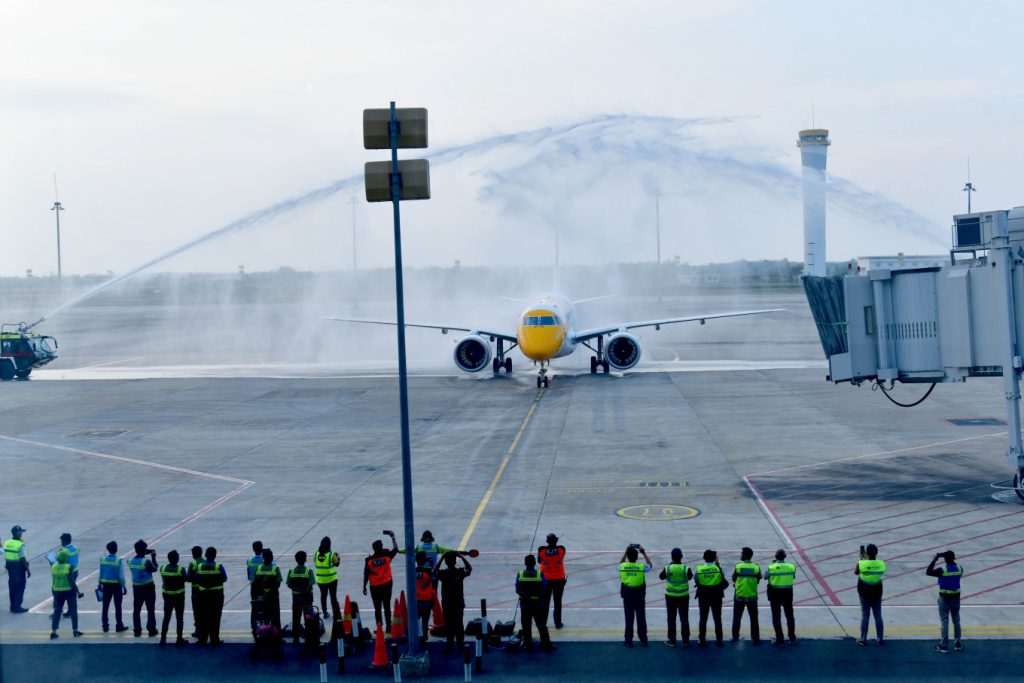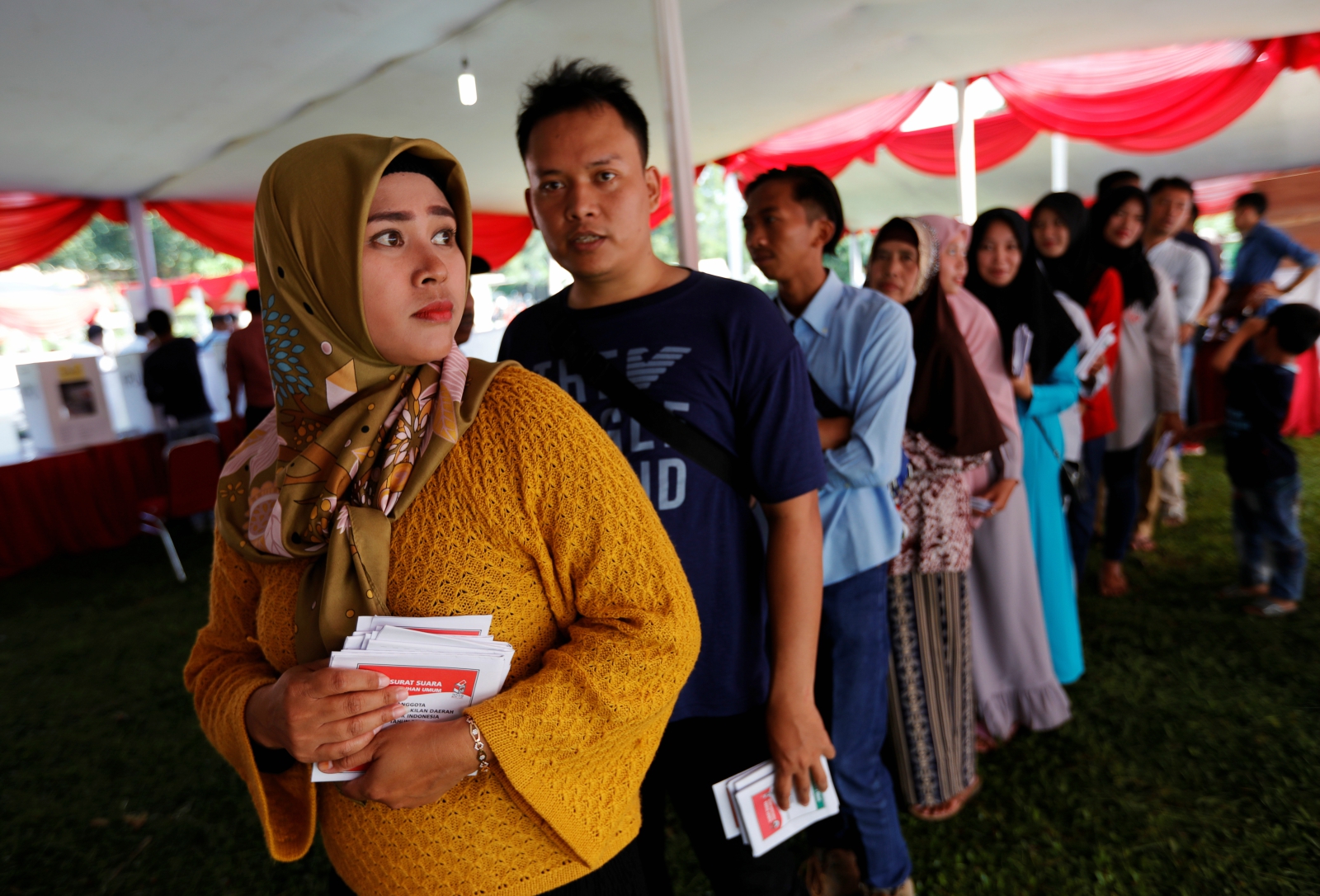While political and institutional hurdles remain, strong political will and coordinated action can turn Kertajati into a viable gateway for West Java, Indonesia’s most populous province.

An aircraft from Singaporean low-cost carrier Scoot receives the customary water cannon salute at Kertajati International Airport on its inaugural flight on Sept. 28, 2024. Scoot flies to Kertajati on Tuesdays and Saturdays. (Photo: Scoot)
Starting Aug. 1, commercial flights from Halim Perdanakusuma Airport (HLP) in East Jakarta will begin shifting to Soekarno-Hatta International Airport (CGK) in Tangerang, Banten. Quietly announced in mid-July, the policy came with limited details. Media coverage simply noted that Batik Air (Lion Air Group) and Citilink had agreed to relocate.
Yet behind this move lies a broader ambition: to revive Kertajati International Airport (KJT) in Majalengka, West Java, which has seen no domestic jet operations since June.
A senior official at the Transportation Ministry confirmed that the move, targeted for completion by the end of 2025, aimed to realign West Java’s aviation map. Closing HLP removes the most convenient option for Greater Bandung flyers who still favor HLP, thanks to connection via the Whoosh high-speed rail, forcing airlines and passengers alike to reconsider Kertajati, especially now just one hour away via the new Cisumdawu toll road.
Kertajati was initially positioned to absorb air traffic from Bandung following the closure of jet services at Husein Sastranegara Airport (BDO) in October 2023, coinciding with the Whoosh debut. The anticipated shift never materialized. Instead, KJT has withered with daily passenger count hovering between 600 and 1,800 at its peak, according to the Transportation Ministry’s December 2024 data.
Even incentives like waived landing fees failed to keep airlines committed. From three local airlines serving domestic routes and two foreign airlines operating flights to Singapore and Kuala Lumpur, today, KJT survives almost solely on seasonal hajj charters. Scoot remains, reportedly only to retain its CGK slots.
Administrative decisions alone, such as closing HLP, will not bring KJT back to life. The airport boasts international-grade infrastructure and a strategic location in Indonesia’s most populous province. But infrastructure without alignment yields no impact. What Kertajati needs is coordinated action across government and industry.
Discussions with policymakers, academics, and aviation industry insiders converge on a central insight: Kertajati’s revival hinges on synchronized action by three key actors. The West Java provincial administration (as owner), the private sector (as operators and users) and the central government (as regulator) must take aligned steps to deliver short-term, high-impact results, while laying the groundwork for long-term strategies already under consideration such as transforming KJT into a maintenance, repair, overhaul (MRO) and cargo hub and integrating it with other transportation modes, especially rail.
First, provincial leadership is critical. Governor Dedi Mulyadi should treat KJT not as a liability but as leverage. Its revitalization must become a pillar of his regional development agenda. Simple, high-impact steps, such as placing road signage in major cities and highways, could increase public awareness that West Java still has its air gateway. Feeder services must also be accelerated to improve access.
Equally urgent is resolving KJT’s fragmented governance. Transferring control of non-aeronautical operations from regionally owned BIJB to state-owned airport operator Angkasa Pura could unlock commercial opportunities and streamline management.
Second, industry players, especially airlines, must lead the operational comeback. The key is establishing KJT-based home carriers, in line with global best practices. Munich-Memmingen Airport in Germany, for instance, was revived through partnerships with low-cost carriers like Ryanair and Wizz Air.
For airlines, this means making tough but necessary bets on West Java’s market potential, particularly its hajj and umrah (minor pilgrimage) economy. West Java sends around 250,000 umrah pilgrims annually, the largest regional share in Indonesia. This translates to over 700 wide-body flights a year or roughly 25 percent of CGK’s Jeddah-bound traffic. Redirecting even a portion of these through KJT would provide an immediate operational anchor.
Similarly, all hajj flights from West Java should be channeled through KJT. Currently, the airport handles only about 32 percent of the province’s total hajj traffic. In this regard, the West Java governor and the relevant ministries will need to act together to provide incentives and a regulatory framework to ensure that air fares can be as attractive as possible for the hajj and umrah travel bureaus to comply.
To sustain operations beyond hajj and umrah, state-owned airlines must be designated as KJT’s anchor tenants. Pelita Air, backed by its parent company Pertamina, is well-positioned to assume this role. With adequate support, it could base its operations at KJT and provide umrah services by acquiring wide-body aircraft or via wet-lease arrangements.
Third, the central government must enable and enforce. The Transportation Ministry can solidify Pelita Air’s presence by offering long-term route rights and additional incentives as compensation for positioning KJT as a viable hub.
More importantly, the ministry must ensure policy compliance across the industry. Halting jet flights at HLP is only the first test. Reallocating 3.8 million annual passengers from Halim is politically sensitive, given the airport’s strategic urban location and its value to the Air Force and private carriers, especially Lion Air, which had previously proposed managing HLP.
Infrastructure meets politics
Kertajati has long been entangled in political controversy. The project was initiated under former governor Ahmad Heryawan as a response to growing calls for secession from the Ciayumajakuning region (Cirebon, Indramayu, Majalengka, and Kuningan), which helps explain why Majalengka was chosen over the Transportation Ministry’s original pick, Karawang. The location was a political compromise that some Jakarta elites still view skeptically. For them, backing KJT with full political and financial support could be risky if it fails again, triggering reputational blowback.
Resolving these political dynamics is as crucial as solving logistical issues. Unless this perception is addressed, central ministries may remain reluctant to fully commit. Without national-level buy-in, even the best-designed plans can falter. Transportation Minister Dudy Purwagandhi, himself from Kuningan, now holds the pen.
The question is: Will this be more than a symbolic reactivation, or can Kertajati become an equitable and strategic aerial gateway for West Java?*
Rahmad Budi Harto is the lead consultant at the public affairs firm Kiroyan Partners. The views expressed are personal.
Source: The Jakarta Post, July 24, 2025.
Download the clipping here.



